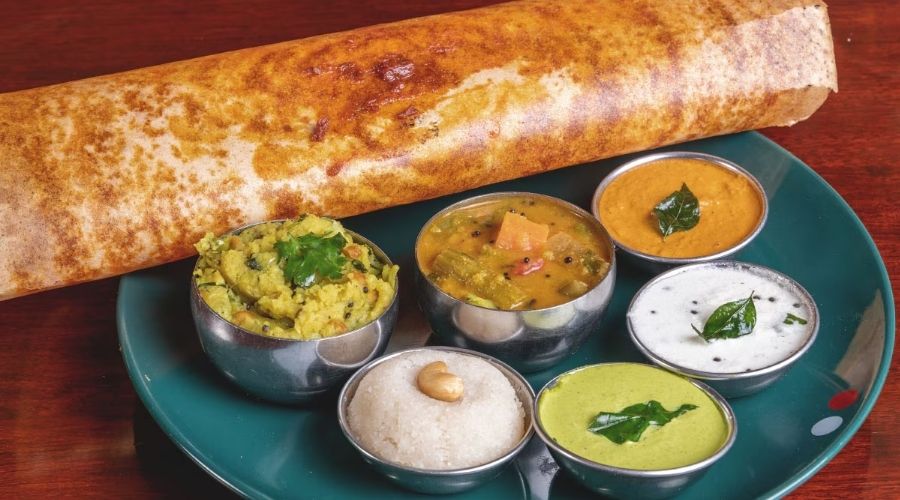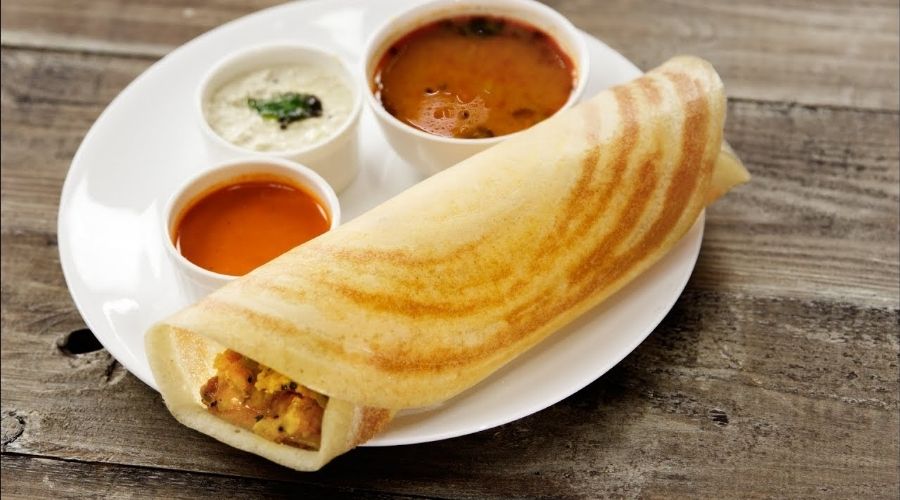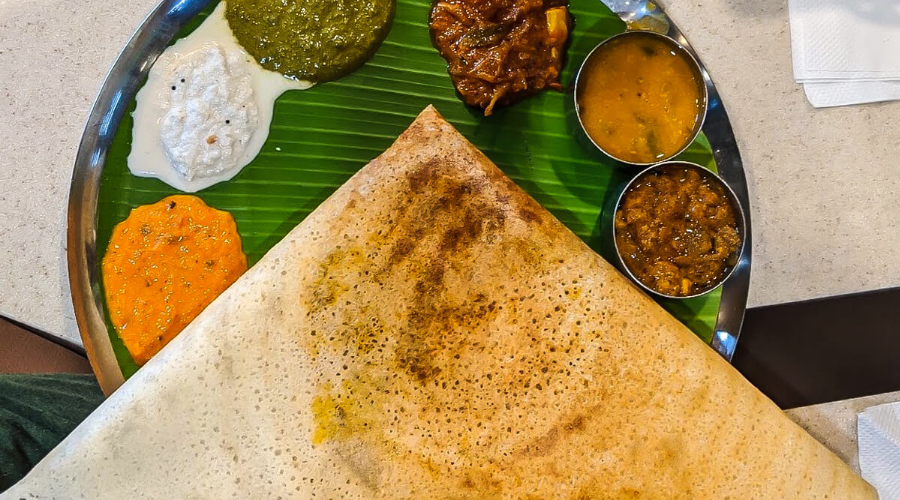Storing cooked dosa properly is essential for preserving its delightful flavor and crispy texture.
Whether you have leftovers from a family meal or want to prepare a batch in advance, knowing how to store dosa effectively can help you enjoy this beloved South Indian dish without sacrificing quality.
From refrigeration techniques to freezing tips, this guide will walk you through the best methods for keeping your cooked dosa fresh and safe to eat.
By following these simple steps, you can ensure that every bite of your dosa is as delicious as when it was first made.
Why Storing Cooked Dosa Properly Matters
Storing cooked dosa properly is crucial for preserving its unique texture, flavor, and overall quality.
Dosa, a popular South Indian dish made from fermented rice and lentil batter, is best enjoyed fresh and crispy.
However, when leftovers occur, improper storage can lead to a loss of its characteristic crunch and may result in a soggy or stale product.
Proper storage techniques help maintain the dosa’s integrity, ensuring that it remains appetizing and enjoyable.
Additionally, storing dosa correctly minimizes the risk of spoilage and foodborne illnesses. When left at room temperature for too long, dosa can become a breeding ground for bacteria.
By utilizing airtight containers and appropriate refrigeration methods, you can extend the shelf life of your dosa while keeping it safe to eat.
Ultimately, taking the time to store cooked dosa properly allows you to savor its delightful flavors and textures even after the initial cooking, reducing waste and enhancing your dining experience.
How to Store Cooked Dosa: A Complete Guide

Storing cooked dosa properly is essential to maintaining its texture and flavor.
Whether you have leftovers or want to prepare in advance, following these guidelines will help you enjoy dosa at its best.
1. Cool the Dosa
Before storing cooked dosa, allow it to cool to room temperature. Placing hot dosa directly into storage containers can create condensation, leading to sogginess.
Lay the dosas flat on a cooling rack or a plate to ensure even cooling.
2. Choose the Right Storage Method
Depending on when you plan to consume the dosa, there are different storage options:
- Refrigeration: If you intend to eat the dosa within 2-3 days, refrigerate it. Place the cooled dosas in an airtight container, stacking them with parchment paper between layers to prevent sticking.
- Freezing: For longer storage, freezing is the best option. Wrap each dosa individually in plastic wrap or aluminum foil, then place them in a freezer-safe bag or container. This prevents freezer burn and allows you to take out only what you need.
3. Label and Date Your Containers
Always label your storage containers or bags with the date.
This helps you keep track of how long the dosa has been stored and ensures you use it within safe timeframes.
4. Reheating Tips
When you’re ready to enjoy your stored dosa, reheating is key to restoring its original texture:
- From the Refrigerator: Heat a non-stick skillet over medium heat and place the dosa on it. You can add a little oil or ghee to help crisp it up. Heat for a couple of minutes on each side until warm and crispy.
- From the Freezer: Remove the dosa from the freezer and let it thaw in the refrigerator for a few hours or overnight. Once thawed, follow the same reheating method as for refrigerated dosas.
5. Avoid Refreezing
It’s important not to refreeze dosa once it has been thawed, as this can affect the texture and flavor.
Only store what you plan to eat after thawing.
6. Check for Signs of Spoilage
Before consuming stored dosa, always check for any signs of spoilage, such as unusual odors, discoloration, or mold. If you notice any of these signs, it’s best to discard the dosa.
7. Storage Duration Awareness
Cooked dosa can be refrigerated for up to 2-3 days and frozen for about 2-3 months. Keeping these time limits in mind will help ensure that your dosa remains safe and enjoyable to eat.
By following these guidelines, you can effectively store cooked dosa, preserving its delightful flavor and texture for later enjoyment!
What to Look for While Storing Cooked Dosa

When storing cooked dosa, several important factors ensure that it retains its quality, flavor, and safety. Here’s what to consider:
1. Cooling Process
Before storing, ensure that the dosa is completely cooled to room temperature. Storing hot dosa can create condensation within the container, leading to sogginess.
Lay the dosas flat on a cooling rack or plate to facilitate even cooling.
2. Storage Container Quality
Choose high-quality, airtight containers for storage. Glass or BPA-free plastic containers with secure lids are ideal, as they prevent air exposure and moisture loss.
Avoid using containers that can retain odors, as this can affect the taste of the dosa.
3. Layering with Parchment Paper
If stacking dosas in a container, place parchment paper between each layer.
This prevents them from sticking together and helps maintain their texture when reheating.
4. Portion Control
Consider dividing the dosas into smaller portions before storing.
This not only makes reheating easier but also minimizes the risk of moisture exposure every time you open the main container.
5. Labeling and Dating
Always label your storage containers with the date of storage.
This helps you keep track of how long the dosa has been stored and ensures you use it while it’s still fresh.
6. Refrigeration vs. Freezing
Determine how long you plan to store the dosa. If you expect to eat it within 2-3 days, refrigeration is sufficient.
For longer storage, freezing is recommended. Ensure that you use freezer-safe bags or containers for frozen dosas.
7. Avoiding Cross-Contamination
Store dosa away from strong-smelling foods in the refrigerator or freezer to prevent odor absorption.
Ensure that the storage container is clean and dry to avoid introducing bacteria.
8. Checking Storage Conditions
Maintain proper temperature settings in your refrigerator (below 40°F or 4°C) and freezer (0°F or -18°C or lower). Regularly check these settings to ensure optimal storage conditions.
By keeping these factors in mind, you can effectively store cooked dosa, preserving its delightful taste and texture for future enjoyment!
What to Look for While Storing Cooked Dosa
Storing cooked dosa properly is essential to maintaining its quality and preventing spoilage.
Here are key considerations to keep in mind:
1. Cooling Before Storage
Ensure that the dosa is completely cooled to room temperature before storing. Placing hot dosa in a container can create moisture, leading to sogginess.
Cooling the dosa properly helps preserve its crisp texture.
2. Airtight Containers
Use high-quality, airtight containers to store the dosa. Glass or BPA-free plastic containers are ideal, as they prevent air exposure and moisture loss, keeping the dosa fresh for longer.
3. Layering Techniques
If stacking dosas in a container, place parchment paper or wax paper between layers. This prevents them from sticking together and helps maintain their texture when reheating.
4. Portioning
Consider dividing the dosa into smaller portions before storing.
This makes it easier to reheat only what you need and minimizes the risk of moisture exposure when accessing the container.
5. Labeling and Dating
Always label your storage containers with the date of storage. This helps track how long the dosa has been stored and ensures that you consume it within the recommended time frame.
6. Refrigeration vs. Freezing
Decide whether you will refrigerate or freeze the dosa based on how long you plan to store it. Refrigeration is suitable for up to 2-3 days, while freezing is ideal for longer storage, typically up to 2-3 months.
7. Odor Absorption
Store the dosa away from strong-smelling foods in the refrigerator or freezer. Dosa can absorb odors from other items, which may compromise its flavor.
8. Regular Temperature Checks
Ensure your refrigerator is set below 40°F (4°C) and your freezer at 0°F (-18°C) or lower. Regularly check these temperatures to maintain optimal storage conditions.
By considering these factors, you can effectively store cooked dosa, ensuring that it remains delicious and safe to eat whenever you’re ready to enjoy it!
How to Choose the Right Accessories for Storing Cooked Dosa

Selecting the appropriate accessories for storing cooked dosa is crucial for maintaining its taste, texture, and safety.
Here’s a guide to help you choose the best options:
1. Airtight Containers
Opt for high-quality airtight containers made of glass or BPA-free plastic. These containers prevent air exposure and moisture loss, keeping the dosa fresh for longer periods.
Glass containers are particularly beneficial as they do not absorb odors and are microwave-safe for reheating.
2. Freezer Bags
For long-term storage, consider using heavy-duty freezer bags. These bags are designed to withstand low temperatures and minimize air exposure, which helps prevent freezer burn.
Be sure to remove as much air as possible before sealing the bags.
3. Parchment or Wax Paper
Using parchment or wax paper between layers of stacked dosas can help prevent them from sticking together.
This accessory is especially useful when freezing, as it allows you to separate individual dosas easily when you’re ready to reheat them.
4. Portion Control Containers
Invest in portion control containers if you often find yourself reheating small quantities of dosa.
These smaller containers are convenient for storing single servings, making it easy to reheat only what you need without exposing the entire batch to air.
5. Vacuum Sealers
A vacuum sealer is an excellent investment for those who frequently store cooked dosa.
This device removes air from storage bags, significantly extending the shelf life of your dosa and preserving its flavor and texture.
6. Labeling Tools
Use labeling tools such as adhesive labels or a permanent marker to clearly mark the storage date and contents on your containers or bags.
This practice helps you track how long the dosa has been stored and ensures you consume it while it’s still fresh.
7. Cooling Racks
Before storing, use a cooling rack to allow the dosa to cool evenly and quickly.
This prevents condensation from forming in your storage containers, which can lead to spoilage.
8. Microwave-Safe Accessories
If you plan to reheat your dosa in the microwave, ensure that your storage containers are labeled as microwave-safe.
This prevents any damage to the container and ensures safe reheating without leaching harmful chemicals.
By choosing the right accessories for storing cooked dosa, you can preserve its delightful flavor and texture, ensuring that it remains a tasty and convenient meal option whenever you need it!
How to Tell If Cooked Dosa Is Bad After Storing
Determining whether cooked dosa is still safe to eat after storing is essential for maintaining food safety and avoiding potential health risks. Here are the key signs to look for:
1. Visual Inspection
Begin by examining the dosa for any visible signs of spoilage. Freshly stored dosa should have a uniform color and texture.
If you notice any mold, discoloration, or dark spots, it’s best to discard the dosa immediately.
2. Smell Test
Perform a smell test to assess freshness. Fresh dosa typically has a pleasant, slightly nutty aroma.
If the dosa emits a sour or off smell, it indicates spoilage, and you should not consume it.
3. Texture Check
Feel the texture of the dosa. It should be soft but not mushy or slimy. If the dosa has developed a sticky or slimy surface, this is a sign that it may have gone bad due to bacterial growth.
4. Taste Test (if unsure)
If the dosa looks and smells acceptable but you still have doubts, you can conduct a small taste test.
Take a tiny bite; if it tastes sour or has an unusual flavor, it’s best to spit it out and discard the entire batch.
5. Check Storage Duration
Consider how long the dosa has been stored. Cooked dosa can be safely refrigerated for up to 2-3 days and frozen for about 2-3 months.
If it has been stored beyond these timeframes, it’s safer to discard it, regardless of its appearance or smell.
6. Review Storage Conditions
Evaluate the conditions under which the dosa was stored.
If it was left out at room temperature for more than two hours or not kept at appropriate temperatures, it may no longer be safe to eat, even if it appears fine.
By being vigilant and recognizing these signs of spoilage, you can ensure that you only consume safe and delicious cooked dosa, protecting your health while enjoying this beloved dish!
1. How long can I store cooked dosa in the refrigerator?
Cooked dosa can be safely stored in the refrigerator for up to 2-3 days. Make sure to place it in an airtight container to maintain its freshness.
2. Can I freeze cooked dosa for long-term storage?
Yes, you can freeze cooked dosa. It can be stored in the freezer for about 2-3 months while retaining its flavor and texture.
Wrap each dosa individually to prevent freezer burn.
3. What is the best way to reheat stored dosa?
To reheat stored dosa, use a non-stick skillet over medium heat.
You can add a little oil or ghee to restore its crispiness. Heat for a couple of minutes on each side until warm.
4. Should I let cooked dosa cool before storing?
Yes, it’s important to let cooked dosa cool to room temperature before storing it.
This helps prevent condensation in the container, which can make the dosa soggy.
5. Is it safe to store dosa in aluminum foil?
While you can use aluminum foil for short-term storage, it’s better to use airtight containers or freezer bags for longer storage to prevent moisture loss and preserve freshness.
6. How can I tell if stored dosa has gone bad?
Signs of spoilage include mold, an off smell, unusual discoloration, or a slimy texture. If you notice any of these signs, it’s best to discard the dosa.
7. Can I refreeze cooked dosa after thawing?
No, it is not recommended to refreeze cooked dosa after it has been thawed, as this can affect its texture and increase the risk of spoilage.
Conclusion
In conclusion, mastering the art of storing cooked dosa allows you to savor this delicious dish beyond its initial preparation.
By following the recommended storage methods, you can maintain its texture, flavor, and safety for several days or even months.
Whether you choose to refrigerate or freeze your dosa, being mindful of how you store it ensures that you can enjoy this culinary delight at your convenience.
So next time you have leftover dosa, don’t hesitate to put these tips into practice and relish the taste of freshly stored dosa whenever you desire!
References
- https://www.theguardian.com/food/2020/sep/23/how-to-cook-the-perfect-dosa-recipe-felicity-cloake
- https://www.indianhealthyrecipes.com/dosa-recipe-dosa-batter/
- https://niksharmacooks.com/dosa-2020-version/
- https://www.cookwithluke.com/recipes/red-lentil-dosa
- https://cooking.nytimes.com/recipes/1020908-dosa


